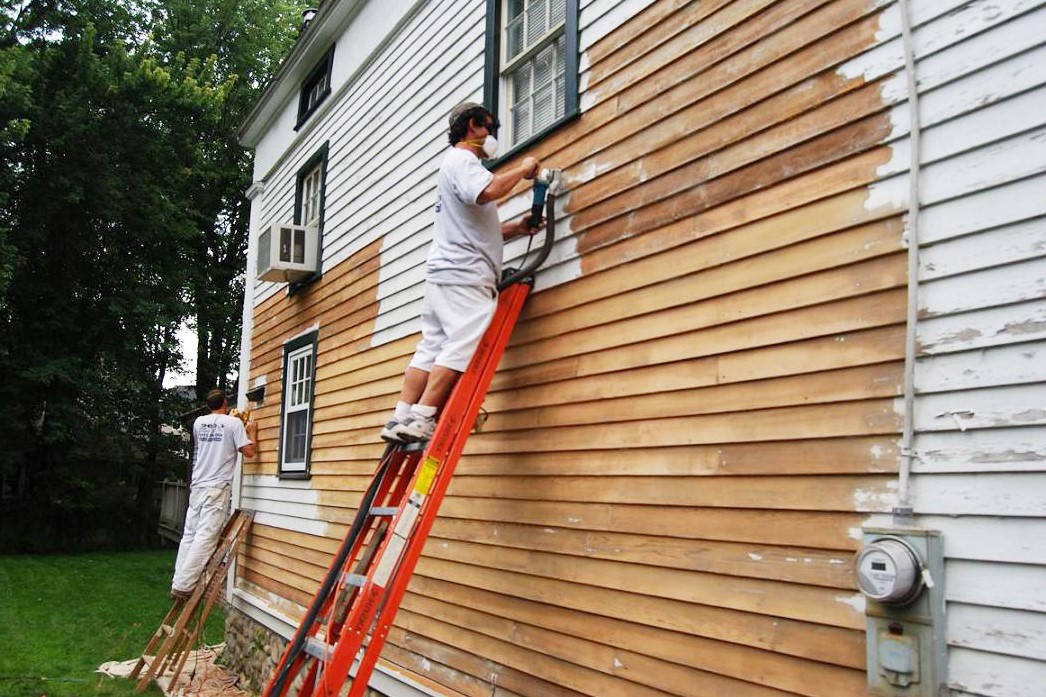
Painting the exterior of the house is a big task. But the rewards are pretty significant too. With little investments in materials and tools, homeowners will save a lot of money, extend the life of their trim and sidings, as well as increase the value of their property. And the best part is, it can make the property look brand new again.
While people may spend a lot of money on materials and tools, professionals’ same task could cost a lot more. The savings come at a steep price, though. Excellent tasks require tons of hours of careful preparation. Plan to devote your entire summer to prepare a medium-size property and paint it. This article will show property owners how to apply the color for a professional-looking and durable finish.
Completing a quality job will require more than perseverance and patience. People will need a steady hand, a sharp eye, and a lot of practice to do a straight and crisp line. Not only that, the homeowners will need all the strength they have to set up and move tall ladders, as well as the confidence to work once they are in place.
Purchase high-quality tools
Applying topcoats does not require a lot of tools beyond what people have already accumulated for priming and scraping. Experts recommend purchasing at least two quality synthetic bristle brushes or cotton rollers for applying latex paints, one four-inches straight-bristles brush for significant areas, and a one-and-a-half-inch angled sash brush to be used for detail jobs.
Visit this site for more info about top coating.
Applying paints shingles, brick or stucco, buy rollers consisting of heavy-duty roller cages, good-quality half-inch nap roller covers, one for every color, and roller screens. Standard nine-inch rollers are excellent for flat and large areas. Purchase a seven-inch size for rolling narrow areas or siding if the house has them. Homeowners also need some clean one-gallon cans and clean five-gallon buckets. Having boom boxes on hand can save your mind while doing the painting job.
Stores or shops can help with quantities, qualities, and color
Choosing colors that complement the property’s details and fit the neighborhood’s character is the first step to an excellent paint job. Check out libraries and bookstores for reading materials about the subject. People will find brochures at stores with collections of quality and historic colors. A lot of these stores have designers on-call who can help property owners choose the color, quality, or quantity of the paint. Homeowners can also hire an architect or a designer.

Buy at least a quart of every color you have chosen and paint entire color schemes on small areas of the house before buying gallons of it. If you do not like the result, change the color and try again. The next thing to do is take a rough measurement of the entire house, noting the kind of surface, for instance, smooth siding, cedar shingles, or stucco. Count the windows and doors. With this, shops can help you calculate the amount of color you will need—plan on applying at least two coats of latex paint over the primer.
To know more about how to calculate square footage of a house, check out https://www.wikihow.com/Measure-Square-Footage for more details.
The first step is laying on the paint. Its goal is to get the paint into the surface most efficiently and quickly possible. Do not worry about smoothing the surface out yet. Use a roller, sprayer, or brush for the first step and apply enough to cover every inch of the surface without creating runs.
Homeowners need to cover the area large enough to allow them to go back and smooth the surface out before it dries. Since humidity, types of color people are using, as well as heat can influence the drying time, people have to experiment as they start the job to get a good feel for how large the area they can safely cover before smoothing it out.
The most common mistake people make is spending a lot of effort and time lying on the paint. A few strokes are all that is needed. Then reload the roller or brush and cover the next spot. Once the small area is painted, property owners are ready for step two, which is laying off the paint.
The first thing to do is to use the brush to spread paints evenly over the painted surface and finish it up with long and continuous strokes. The goal is to cover the entire area but not hide the previous layer with a smooth and even layer. This step of house painting needs to be done after the paint is laid on before it starts to dry. One of the most frequently asked questions is how to tell if the owner is applying enough paint.
The bad news is, there is not an exact answer to this question. In general, people will have better success applying at least two thin coats compared to struggling to cover the primer using a thicker coat. The thin coating dries more thoroughly and does not cause issues like sags, material buildup, and run associated with thicker layers. The goal here is to get enough paint on surfaces to allow the roller, brush, or spray to glide smoothly and not leave so much that it forms sags or runs.



